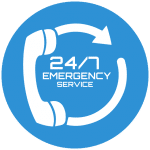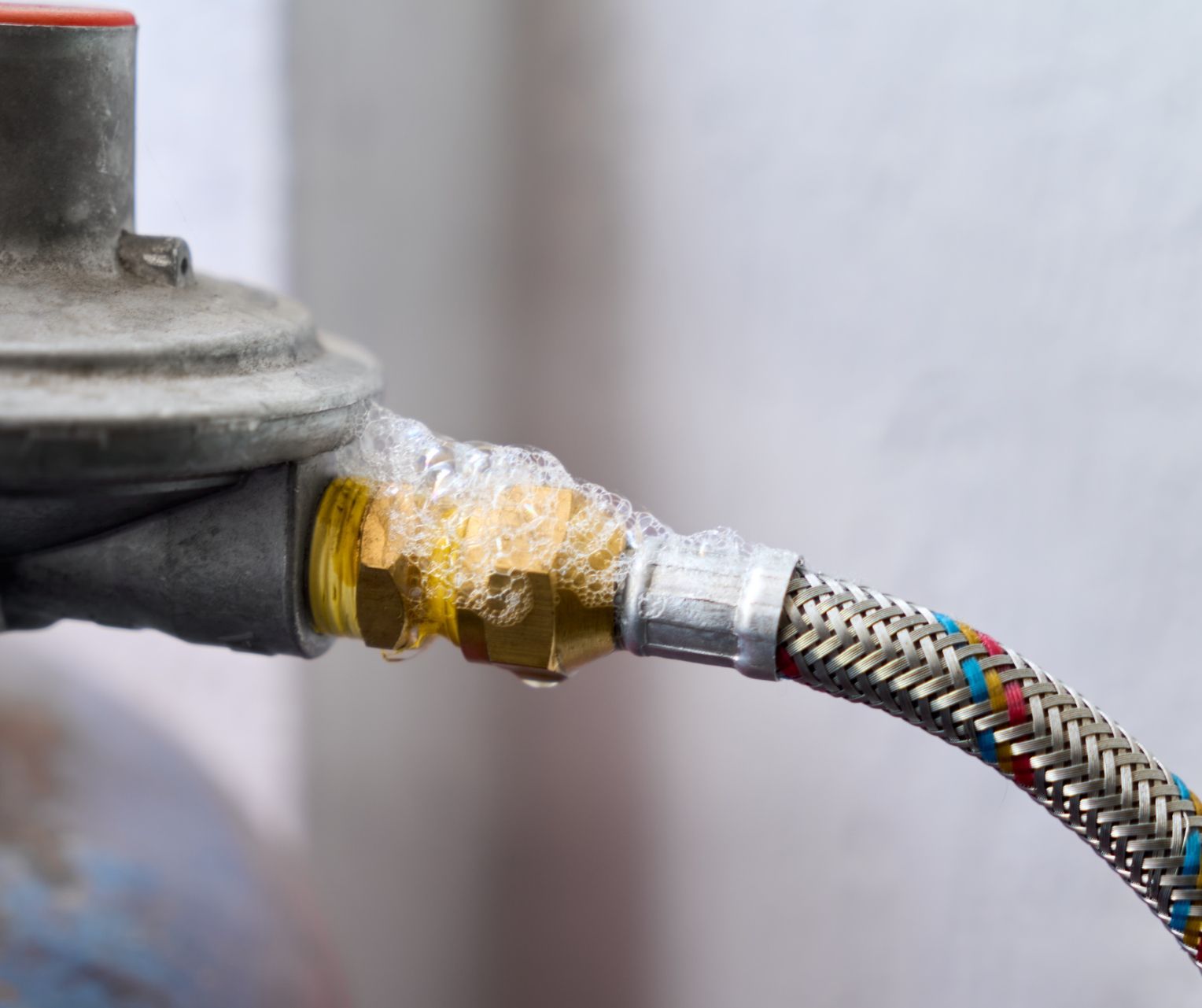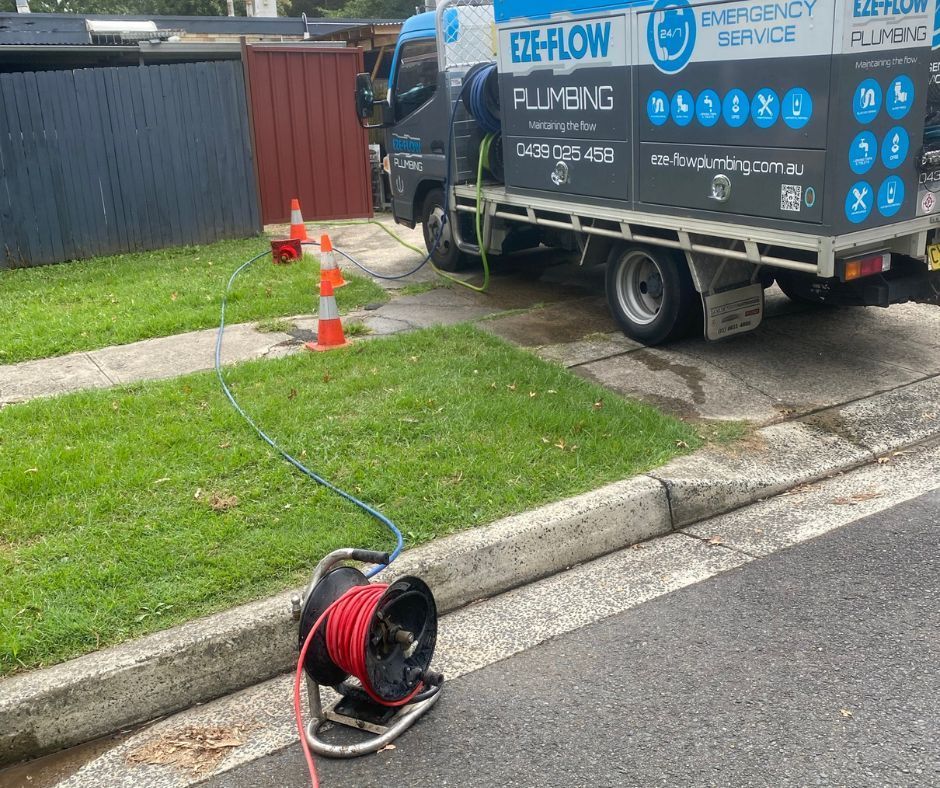How to Detect a Water Leak in Your Home
It often starts small, a quiet drip in the laundry, a faint damp patch behind a wall or a musty smell in the hallway. Left alone, that little leak can swell into swollen skirting boards, mould growth and a water bill that makes your eyes water.
For homes across the North Shore and Northern Beaches, knowing how to detect water leaks protects more than your budget, it safeguards your property value, your indoor air quality and your peace of mind.
In this guide, we’ll show you how to detect a water leak at home, the tell-tale signs to watch for, simple tests you can do yourself, when to
call in a licensed plumber for leak detection and repairs, and how to prevent future issues.
What Is A Water Leak & Why Early Detection Matters
A water leak is any unintended escape of water from your plumbing system, visible (like a dripping tap or a weeping flexi-hose) or hidden (inside walls, under floors, in ceilings, beneath driveways or along garden lines).
The Most Common Causes of a Water Leak Include:
Fixtures and Fittings
Worn tap washers, leaking toilets, ageing flexi-hoses and corroded outdoor taps exposed to salt air.
Pipework
Pinhole leaks in copper, failed joints in older renovations and movement from soil or tree-root pressure.
Appliances
Dishwashers, fridges with ice/water lines, washing machines and hot water systems.
Roof and Stormwater
Cracked roof tiles, blocked gutters/downpipes and overflowing stormwater after heavy rain.
Consequences of Undetected Leaks:
Structural Damage
Moisture warps flooring, blows plasterboard, weakens framing and can affect foundations if left unchecked.
Mould & Air Quality
Damp spaces invite mould, which can aggravate asthma and allergies.
Higher Water Bills
Even slow, concealed leaks waste thousands of litres a year.
Insurance & Resale
Ongoing or neglected leaks may complicate claims and spook pre-purchase inspections.
Common Warning Signs of a Water Leak
Spotting trouble early starts with knowing what to look, listen and sniff for. If you’ve wondered how to detect a water leak, these tell-tale signs are your first red flags before damage sets in.
Visible Indicators
- Yellow-brown water stains on ceilings or walls.
- Paint or wallpaper that peels, bubbles or feels soft.
- Warped or cupped timber floors, swollen skirting.
- Damp patches, mould or mildew in wardrobes, behind furniture or along external walls.
Auditory & Sensory Clues
- Dripping, hissing or trickling when taps and appliances are off.
- A persistent musty smell (often stronger after rain or humidity spikes).
- Condensation or unusual humidity inside vanity units or sink cabinets.
Utility & Financial Signs
- A sudden spike in your water bill without a change in usage.
- Reduced water pressure or “air spitting” from taps.
- Usage is rising on smart meters or monitored bills even when nobody is home.
Outdoor or Hidden Signs
- Soft, spongy lawn sections or unusually lush strips tracing an underground pipe.
- Puddling near the house slab, water meter or along paved areas.
- Moss or algae growth where water shouldn’t be present.
How to Detect a Water Leak at Home with Simple DIY Methods
Before you rip up tiles or cabinets, start with a few safe, simple checks. These steps show how to detect a water leak without guesswork.
Water Meter Test
- Turn off all taps and water-using appliances.
- Locate your meter (usually at the front boundary, in apartments, in a service cupboard).
- Note the reading or check if the flow indicator is spinning.
- Wait 10–30 minutes (no water use at all).
- Re-check. If the numbers move or the flow indicator spins, you likely have a leak on your property.
Toilet Leak Test
- Add a few drops of food colouring (or a dye tablet) to the cistern and wait 10–15 minutes without flushing.
- If colour appears in the pan, the cistern is leaking into the bowl (often a worn flapper/valve seal).
Inspect Fixtures & Appliances
- Use a dry tissue to trace along flexi-hoses and joints under sinks; look for dampness.
- Check around the base of toilets for moisture.
- Inspect behind/under dishwashers and laundry tubs.
- Glance at the hot water unit’s relief valve drain, a constant trickle may indicate a fault.
Listening & Smelling
- At night (when ambient noise drops), listen near suspected walls/floors.
- Sniff out musty pockets in wardrobes, under-stair nooks and behind stored items.
How to Detect Water Leak With the Help of a Licensed Plumber
Experienced licensed plumbers combine know-how with specialised tools to locate leaks precisely and minimise damage.
Professional, Hands-On Experience in Detecting Leaks
Pattern recognition matters. Seasoned plumbers can read moisture patterns, slab set-downs and fixture layouts to narrow search zones quickly.
Leak Detection Tools
Acoustic listening (pinpointing pressurised leaks), thermal imaging, moisture meters and pipe-locators to map concealed lines.
Leak Detection Devices & Sensors
Smart sensors and shut-off valves can alert you to abnormal flows and stop the supply automatically during a burst.
When To Call a Pro
- Your meter test indicates flow, but you can’t find the source.
- Signs appear behind walls/under slabs or outdoors along long runs.
- Recurrent mould despite ventilation.
- You need compliance documentation for insurance/strata.
- You want to validate the source of the water leak before repairs.
What To Do Once You Suspect A Leak
When something looks, sounds or smells off, a calm, step-by-step response beats panic every time. This section shows exactly what to do once suspicions arise, so you can limit damage to your plumbing and your property.
Isolate & Mitigate
Turn off the nearest isolation valve or the main at the meter. Move furniture, lift carpets and start gentle ventilation/drying.
Document Everything
Photos, short videos, dates/times and a quick note on what you observed and when. This helps with insurance and strata properties.
Avoid Guess-and-gouge
Don’t start breaking tiles or walls chasing damp marks, modern detection reduces unnecessary damage.
Call a Reliable Local Plumber
Choose licensed, insured, well-reviewed professional plumbers who work across the North Shore and Northern Beaches, like Eze-Flow Plumbing, who can provide leak detection and repair.
Prevention & Best Practices
These good habits help you stay ahead of problems, so you’re not figuring out how to detect a water leak after damage has already begun.
Regular Maintenance
Replace ageing flexi-hoses. Re-seat/replace tap cartridges. Check silicone seals around showers and sinks.
Insulation & Drainage
Ensure hot/cold lines aren’t rubbing or vibrating. Keep gutters/downpipes clear so stormwater flows away from the house.
Quality Installation & Materials
Licensed installation of fixtures, pressure-limiting where required and compliant backflow prevention.
Seasonal Checks
After storms or prolonged humidity, inspect ceilings and eaves. Coastal homes should keep an eye on salt-exposed outdoor taps and fittings.
Smart Monitoring
Consider smart leak sensors and automatic shut-off valves for high-risk areas.
Benefits of Detecting a Water Leak Early
Spotting moisture early isn’t just about stopping a drip. Here’s why acting fast matters and how knowing how to detect a water leak translates into fewer repairs, lower bills and far less stress.
Prevent Expensive Repairs
Catching leaks early can avoid major structural repairs like replacing flooring, walls or ceiling damage due to prolonged water exposure.
Reduce Water Bills
Even a small, hidden leak can waste thousands of litres per year. Early detection helps you stop the drain on your wallet and the environment and is the essence of how to detect water leak issues efficiently.
Protect Property Value
Homes with unresolved water issues are harder to sell and may drop in value. Prevent long-term moisture damage, mould or visible staining that could impact future inspections.
Avoid Health Hazards
Standing water and damp conditions lead to mould growth, which can cause respiratory problems, especially for children, the elderly or those with allergies.
Minimise Insurance Risks
Some policies may not cover damage if the issue was ongoing or due to neglect. Acting early, documenting signs and using licensed plumbers support smoother claims.
Extend the Life of Plumbing Fixtures
Leaks often stem from wear and tear. Identifying issues early can extend the lifespan of pipes, taps, joints and connectors with minor maintenance rather than major replacements.
Peace of Mind
Knowing your home is dry, safe and leak-free brings peace of mind, especially during storm season or when you’re away.
Conclusion
Key steps in detecting a water leak are to: stay alert to small clues (stains, musty smells, quiet hissing) and act early. Simple DIY checks like the water-meter test and a quick toilet dye test can confirm a leak fast, helping you decide whether it’s a minor fix or time to call a pro.
Catching issues early saves money, prevents structural damage and mould, and protects your home’s value. If you’re in the North Shore or Northern Beaches and are asking, “How do you detect a water leak?” Book a professional leak inspection with Eze-Flow Plumbing and request your no-obligation check-up today and get peace of mind.
You may also explore Eze-Flow Plumbing’s full range of services, including 24/7 emergency plumbing in the Northern Beaches and in the North Shore, leaking toilet repairs, hot water troubleshooting and replacements and blocked drain clearing, so you’ve got a local expert on call whenever you need.
Frequently Asked Questions
How to detect a water leak hidden behind walls?
If you’re searching for how to detect water leak behind walls, look for clusters of clues (like persistent musty odours, patchy or returning stains, bubbling paint or warped skirting/door frames) in a specific area. If several appear together, it’s a strong indicator of a concealed leak and you should contact Eze-Flow Plumbing for confirmation.
Can a small drip really cause serious damage over time?
Yes. Slow, continuous moisture can rot timber, swell cabinetry, encourage mould growth and quietly increase your water bills. What starts as a minor nuisance can become a major repair if left unaddressed.
Are there tools I can buy cheaply that help with how to detect water leak problems?
Basic moisture alarms for cupboards, simple hygrometers for humidity and smart water monitors that track usage can provide early warnings when you’re learning how to detect a water leak. They’re helpful for alerts, but they don’t replace professional diagnosis.
How much does professional leak detection cost in my area?
Costs vary with access, building type and whether the issue is inside walls, under floors or outdoors. Ask Eze-Flow Plumbing for a clear quote and what’s included.
When is a situation urgent (risk of collapse, mould, structural damage)?
Treat it as urgent if you see active ceiling drips, bulging or sagging plaster, rapid spread of stains, pooling near foundations or any water near electrical fittings. Call Eze-Flow Plumbing immediately.
Will leak detection and repair be covered by home insurance?
Policies differ. Many cover sudden, accidental water damage but may exclude long-term seepage or wear and tear. Keep photos, invoices and a licensed plumber’s report and speak with your insurer about next steps before commencing non-emergency repairs.
How often should I inspect plumbing systems?
Do quick visual checks a few times a year and after major storms or renovations. Arrange a professional assessment if you notice recurring moisture, unusual odours or unexplained increases in water usage.
How do you detect a water leak at home?
Start with a simple water-meter test. Turn off all taps and appliances, then check if the meter is still ticking. If it is, water’s moving somewhere. Look for clues like damp patches, musty smells, bubbling paint or a quiet hissing behind walls. A quick toilet dye test (a few drops of food colouring in the cistern) can also reveal silent leaks.












































































































